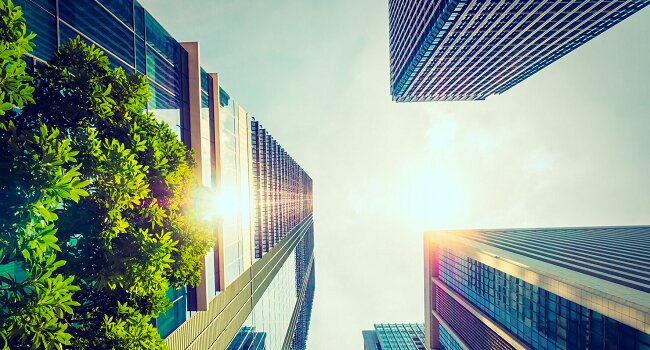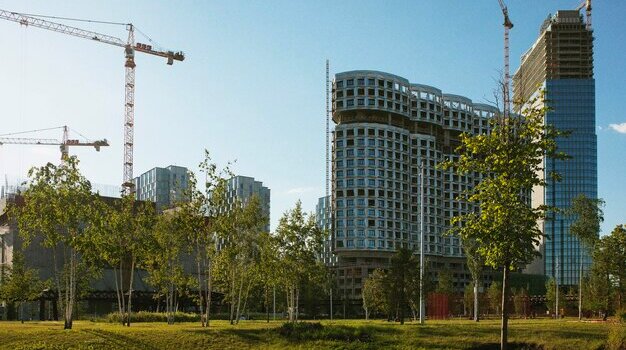The construction industry faces a significant challenge: how to meet the growing demand for buildings while reducing the environmental impact of construction and operation. One promising solution is the use of aluminum composite material (ACM) panels in metal building construction. In today’s article, we will break down the various ways that acm panels systems are creating sustainable synergies with prefabricated steel buildings, as well as touch on some other forward-thinking solutions that can help keep modern structures at the vanguard of the sustainable construction revolution.
What Are ACM Panels?

ACM panels are a type of cladding material consisting of two thin sheets of aluminum bonded to a polyethylene (PE) core. They are lightweight, strong, and durable, making them ideal for use in metal building construction. In addition, modern ACM panels are incredibly flexible and can be finished in a number of attractive designs, allowing them to enhance the aesthetics of a wide range of commercial structures.
Why Are ACM Panels Sustainable?
Sustainability is a term that gets thrown around regularly in the current construction landscape. However, even some industry professionals don’t have a complete understanding of everything that sustainability entails. ACM panels offer several benefits that make them a sustainable choice for metal building construction. Among these are:
- Energy efficiency: ACM panels have a high thermal insulation value, which means they can help to reduce energy consumption.
- Durability: ACM panels are highly durable and can last for decades without needing to be replaced. This reduces the need for materials and energy associated with the production and installation of new panels.
- Recyclability: ACM panels are 100% recyclable, so they can be reused at the end of their lifespan. This helps to reduce waste and pollution.
At the end of the day, pairing ACM panels with modern steel structures creates a highly durable finish that can reduce energy consumption and reduce ongoing maintenance requirements, making it a great option for sustainable construction.
Why Metal Buildings?
With the elite versatility demonstrated by ACM panels, you may be wondering why the focus on metal buildings? Wouldn’t ACM panels be a great choice to pair with any building type?
The short answer is “yes.”
ACM panels undoubtedly add value to any type of building, whether it be wood-framed, concrete, or steel.
However, there is a major trend in the construction industry focusing on prefabricated metal buildings as a sustainable solution in the face of rapidly increasing demands for commercial space. Steel structures have a number of sustainability benefits, including:
- Elite durability that limits ongoing maintenance and repair investment
- Off-site fabrication processes that lead to greater accuracy and shorter construction times (requires fewer construction resources)
- High recyclability
Despite these benefits, some opponents argue that metal buildings lack aesthetic charm and are simply a utilitarian means to an end. This is categorically false, with modern steel structures being compatible with a wide range of aesthetically appealing claddings and facades–ACM panels included.
Sustainable Insulation Materials
As you have likely gathered, sustainability is a dynamic and multi-faceted concept, with many factors playing a role in creating a truly sustainable structure. In addition to using ACM panels, there are several other ways to make metal building construction more sustainable. One important step is to use sustainable insulation materials. Although there are many options in this regard, some of the most pertinent in metal building construction include:
- Spray foam insulation – due to the rigid nature of metal buildings, this is one of the most popular insulation products for filling hard-to-reach nooks and crannies. It is a chemical product created by two materials, isocyanate and polyol resin, which react when mixed with each other and expand up to 30-60 times its liquid volume after it is sprayed in place. This creates a highly insulative barrier with exceptional thermal insulating value with virtually no air infiltration.
- Polyiso insulation – this type of insulation is renowned for its high R-value per inch. This makes it an exceptional material for exterior wall insulation because it is light and easy to install, creating sleeker walls with less structural support required than for other insulation types.
In addition, products such as sheep’s wool, hemp, and denim are increasing in popularity as sustainable insulation sources thanks to their minimal processing and high R-values.
Forward-Thinking Solutions

In addition to using sustainable materials, there are several other forward-thinking solutions that can be used to make metal building construction more sustainable.
Some trending options include:
- Solar panels: Solar panels can be installed on the roof of a metal building to generate electricity from the sun. This can help to reduce energy consumption and greenhouse gas emissions.
- Green roofs: Green roofs are covered with vegetation, which can help to reduce stormwater runoff, improve air quality, and provide habitat for wildlife.
- Water-efficient landscaping: Water-efficient landscaping uses plants that require less water, which can help to reduce water consumption.
When these forward-thinking solutions are combined with sustainable material selection, the building has a holistic approach to sustainability that minimizes the carbon footprint of the structure.
The Sustainable Construction Revolution Is Here
As the demand for sustainable buildings continues to grow, ACM panels and other sustainable materials and solutions are poised to play an increasingly important role in metal building construction. For more information on the latest trends in all matters construction-related, explore the resources at World Construction Today for the leading insights in the industry!




























